Pilea: types and care at home
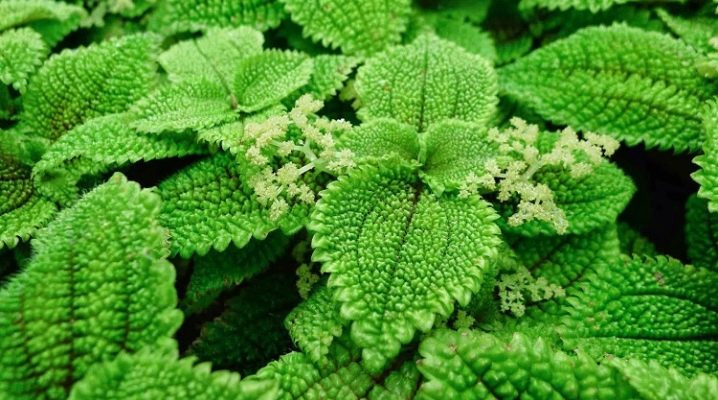
Many people use live greens to decorate rooms. One of the compact, but very beautiful options is the saw. The variety of varieties allows you to choose a plant for every taste. Unusual foliage texture, variability of shapes and colors open up ample opportunities for creating indoor compositions. The culture is unpretentious and quite hardy. Despite the obvious external differences between the species, they all have similar preferences. This applies both to the conditions of detention and to the intricacies of care. This makes it easier for the grower who wants to breed several varieties of sawtooth at the same time.
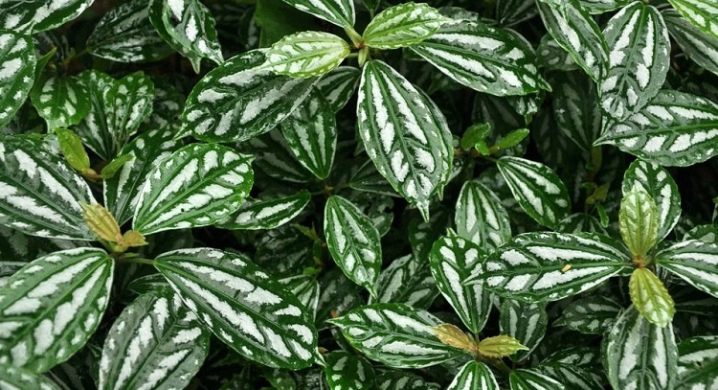
Peculiarities
Pylaea stand out among indoor flowers. The modest size and neatness do not prevent them from looking expensive and impressive. The culture got its name from its ability to spray pollen over long distances. True, this can only be observed in the wild, namely in tropical forests.
Pileae are herbaceous plants from the Nettle family. Despite the external resemblance to the well-known nettle, the leaves are not burned. They are pleasant to the touch, they can be smooth or covered with a little fluff. The shape is usually oval, with a pointed end. Smooth or serrated edges.
The color of the foliage is both monochromatic and variegated. The combination of different shades makes the plants especially spectacular. It can be a combination of green with burgundy, brown, white. The surface of the leaves is textured, patterned. The length of each leaf can be from 6 to 10 cm, the width is about 3 cm. The petioles are short, arranged in pairs.
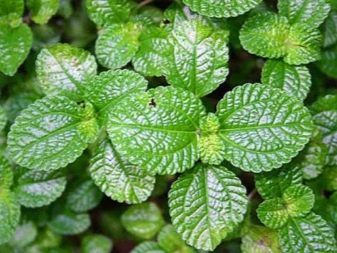
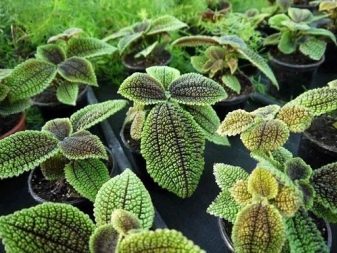
The stems are resilient, branching profusely, creeping and straight. The size of the bush in rare cases reaches 40 cm. Usually the plants are miniature. Pylaea blooms, however, it is positioned as an ornamental deciduous plant. The fact is that small flowers, painted in white or pinkish tones, can be called inconspicuous. They gather in inflorescences, but are almost invisible against the backdrop of lush greenery.
Sawls are usually grown traditionally in pots. However, some species are no less good as ampelous plants.
Graceful shoots with rich foliage perfectly complement any hanging container.
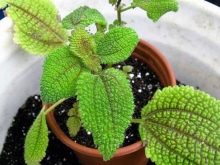
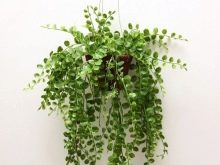
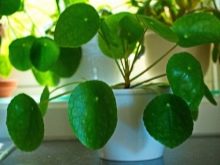
Varieties
Pileas delight flower growers with their diversity. There are several hundred species and varieties of this amazing culture. Each variety has its own characteristics, unique color, leaf shape and other individual characteristics. Let's consider the most famous options.

Thick-leaved
This is one of the most popular types. The bright green foliage has reddish brown streaks. Soft fluff and expressive texture of the leaf plates create a feeling of soft velvet.
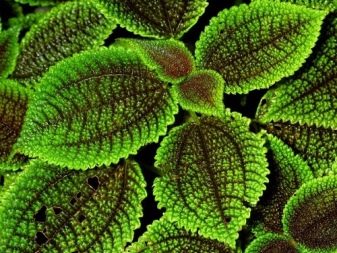
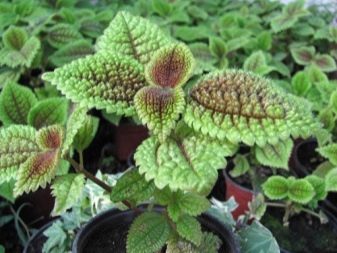
Delicate
A distinctive feature of this variety is the ability of upright shoots to transform into lodging ones during development. Leaves are pinkish-green, oval in shape. The interesting surface structure and carved edges make this sawtooth a wonderful decorative piece.
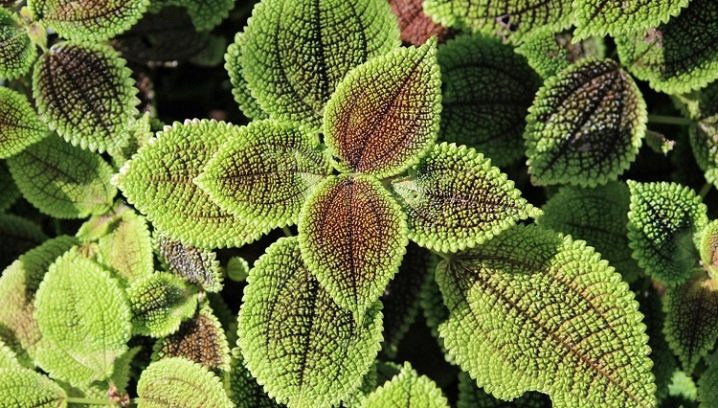
Spruce and Norfolk
A small bush grows up to 20 cm. The surface of the leaves resembles the skin of a reptile. They are matte, bumpy, and have a reddish brown color. Small jagged edges and a pearlescent sheen complete the picture, enhancing the likeness. The flowers consist of 4 petals, have a pleasant white-pink color.
Separately, it is worth highlighting the variety. Norfolk... Unlike the basic version, it is painted in a bright mint tone with a slight silvery sheen. Against this background, dark veins stand out, visually enhancing the texture of the foliage. The underside of the leaves is red. Drooping shoots. The culture looks great in a flower pot.
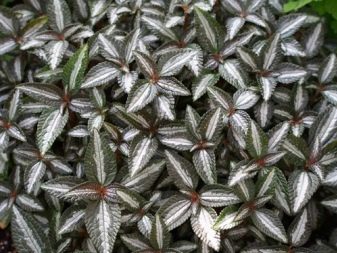
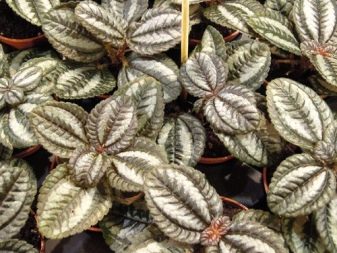
Pressed (compressed, depressed)
This is a ground cover species. Dense shoots droop. In nature, these bushes form a dense green carpet. Miniature rounded leaves do not grow more than 5 mm. In the rays of the sun, they shimmer beautifully. Due to the short petioles and small foliage, the bushes seem to be pressed to the ground, which explains the name of the species.
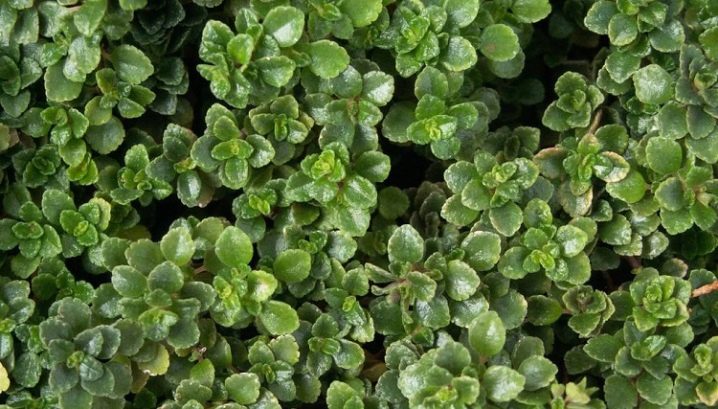
"Ellen"
This is a hybrid species. It stands out among others with its unusual olive color with a silvery tint.
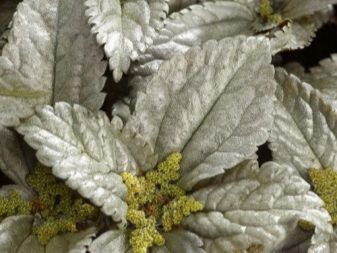
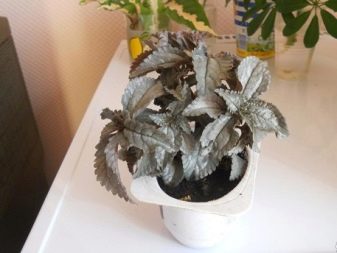
Bronze
This is another unique hybrid variety. The plant reaches 30 cm. The bush is covered with pointed silvery leaves, creating a feeling of the alien origin of the plant.
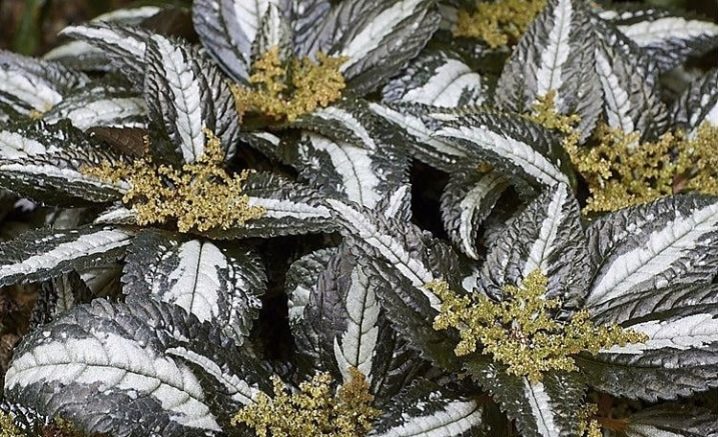
Sizaya (Lebanese, glaucopilla)
This compact species with high decorative properties is excellent for indoor growing. The culture is growing pretty fast. Creeping shoots. The stems have a burgundy hue, decorated with miniature rounded leaves. The silvery bloom that covers the green of the foliage explains another name for the species - "silver spray".
The culture looks great in hanging containers, can be used in the garden to decorate flower beds and create living compositions.
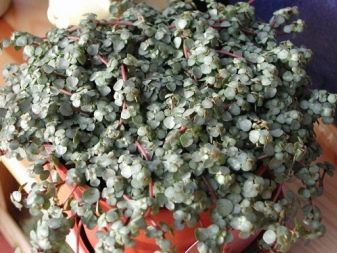

Wrapped
This species has erect shoots. Its size reaches 30 cm. The leaves are oval, rough, have a pronounced texture. Bright light greens are combined with a burgundy brown tone, forming an interesting color. The inflorescences have a delicate pink tint.

Kadiera (Kadier)
This species has a rather modest appearance. Leaves are smooth, glossy. Original color: variegated, white-green. However, the lack of a cannon makes the foliage look rustic. The size of the leaves reaches 10 cm. The stems are thin, as the plant develops, they begin to bend and "look" down. The maximum height of the bush is 40 cm.
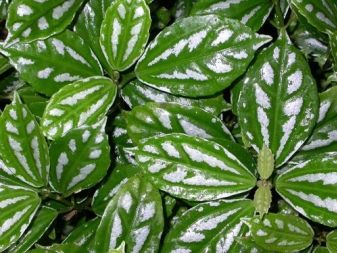
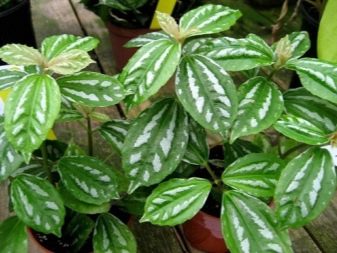
Peperomiform
This variety stands out for its unusual leaf shape. Almost round, they resemble water lilies. The surface is without pubescence, has a "fresh" green tint. Thin streaks are barely visible. The leaves are kept on graceful long petioles. The culture blooms very rarely, but this does not diminish its attractiveness.
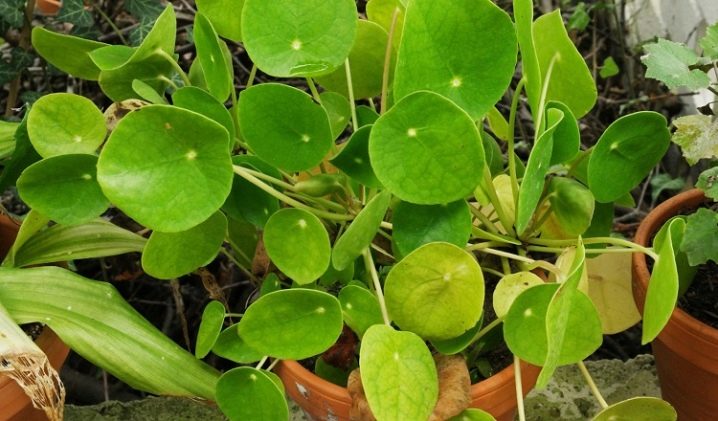
Small-leaved ("Microfilla")
Spreading shoots of this plant actively branch. The many miniature leaves covering them give the culture an openwork and lush look. Foliage color is light green, one-color. Leaves are glossy, rounded, slightly pointed. Here it is worth noting the mossy saw. This is a subspecies of small-leaved culture. As the name suggests, the plant is very similar to moss. It is short, has threadlike shoots and small foliage.
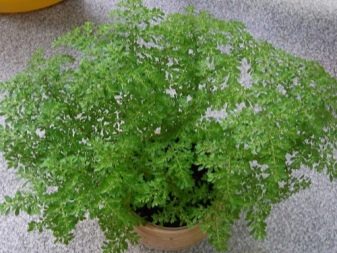

Coin-leaved
This adorable groundcover looks like a lush bush. Round glossy leaves really resemble coins. The edges of the plate are serrated. The color is bright, pale green. The culture has been successfully applied both to decorate rooms and to create a luxurious green carpet effect in gardens.
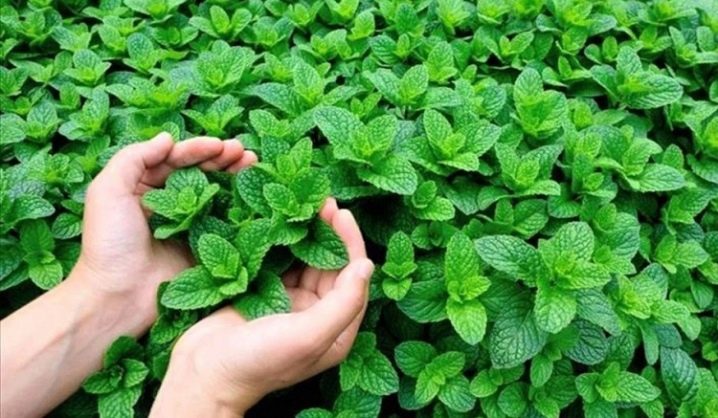
Creeping
As the name implies, this species has long, creeping shoots. Sometimes they reach 25 cm. The leaves are characterized by a "wrinkled" textured surface. The shape is round, neat. The color is dark green, sometimes the foliage is slightly purple.
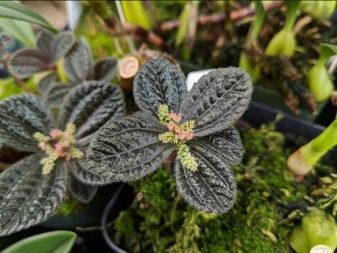
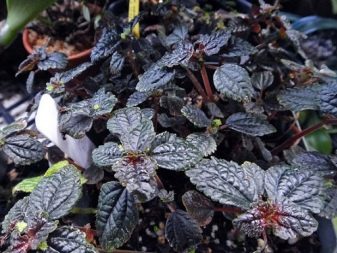
Conditions of detention
Light
Pilea prefers soft diffused lighting or partial shade. The best places to maintain culture are the windowsills in the west and east. It is permissible to place a flowerpot near the window on the south side.
In cloudy weather and a period of short daylight hours, special devices can be used. For example, phytolamps are perfect.
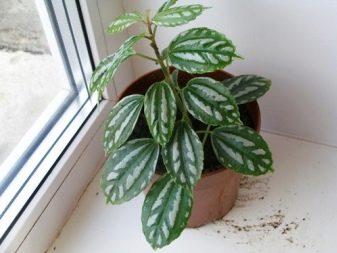
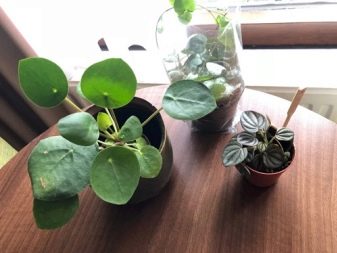
Temperature
Despite its southern origins, the culture does not like the heat. The best temperature regime is moderate.During the warm period, it is advisable to maintain 19-23 degrees above zero. In winter, it is worth putting the plant in a cool place (at 14-18 degrees). The only exception is the wrapped saw. This variety gets cold as early as 18 C.
It is also important to exclude drafts and strong temperature changes. This applies to all types.
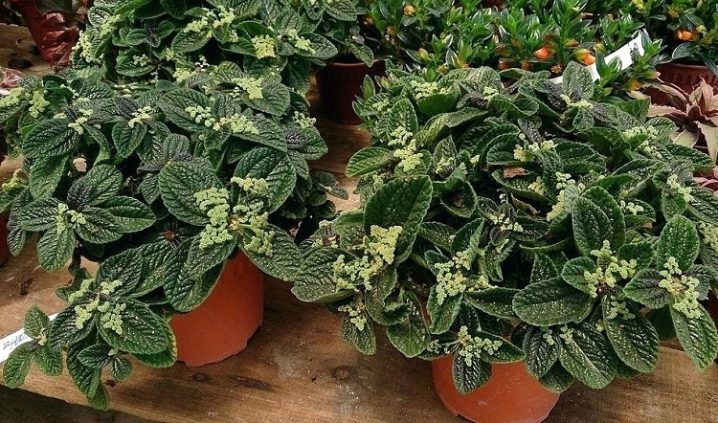
Planting and transplanting
Due to the rapid growth, it is necessary to replant the culture every year. However, some are limited to carrying out the procedure every 2-3 years. The rest of the time, they maintain the shape of the plant by pruning. The best time for transplanting is spring. It is permissible to do this at the beginning of summer.
The roots of the culture are small. They are located close to the ground surface. Therefore, it is better to take a container for a flower shallow (maximum 8-10 cm deep). Moreover, it should be wide. Drainage holes are required. As for the container material, it can be anything.
The soil during initial planting and when replanting should be light and loose. It should also allow air to pass through well. You can buy a multipurpose mixture for decorative deciduous plants at a specialty store. However, some people prefer to cook it on their own. In this case, you should take in equal shares:
- peat;
- sod land;
- humus;
- coarse sand.
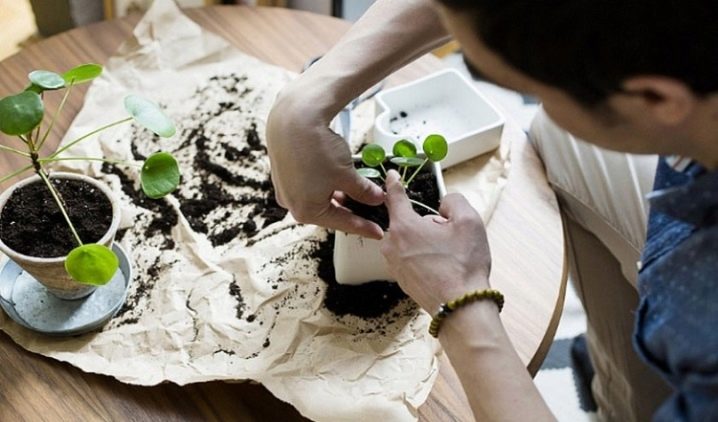
The resulting mixture must be disinfected. Two options are acceptable: using an oven or exposure to very low temperatures. Don't forget about drainage. It is necessary, since the delicate roots of the culture suffer greatly from moisture stagnation. The drainage should be as small as possible, because the planting container is small. Let's consider the transplant process step by step.
- The bottom of the tank is occupied by drainage. Its volume should be about 3 cm. The prepared substrate is laid on top of it.
- The culture is carefully removed from the old container. It is important not to injure the roots.
- The plant is placed in a new pot. It is better to use the transshipment method.
- The remaining soil is carefully poured from the sides. You do not need to tamp it. Good watering is enough. So the soil will sink and fill the voids. You should also not deepen the saw.
It should be understood that after 4 years the plant has to be updated. For this, cuttings are rooted. The peperomyelic variety should be propagated by dividing the bush.
As for the mother bushes, they are thrown away.
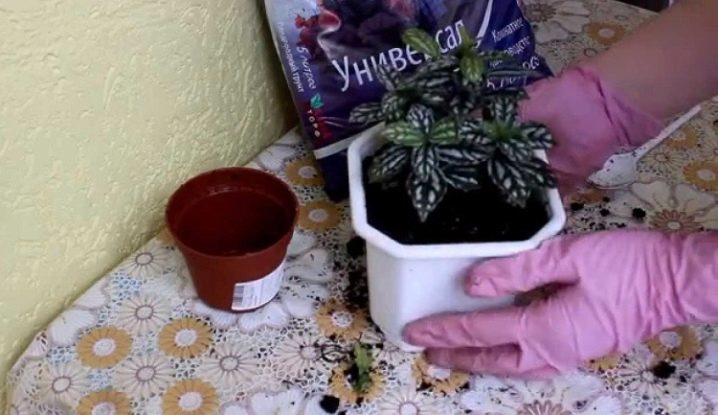
How to care?
Watering
An important nuance of caring for a saw at home is the correct organization of watering. The culture is drought tolerant, which gives hope for successful cultivation even for forgetful growers. It is best not to take long breaks between soil irrigation. Watering sparsely but abundantly is a bad idea. Excess moisture is detrimental to the flower. Therefore, the soil should be moistened when the topsoil dries out (about 3-4 cm).
It is better to add moisture in small portions. In winter, it is worth reducing the number of procedures. Only clean, settled warm water is suitable for irrigation. You can also use drinking or filtered liquid.
You cannot spray the culture. To maintain a good level of air humidity, you can periodically place the plant on a pallet with wet pebbles or moss. During the central heating operation period, the saw can be carried away from the radiator. It would be useful to buy a special steam generator.
You can also simply place a tray filled with water next to the pot.
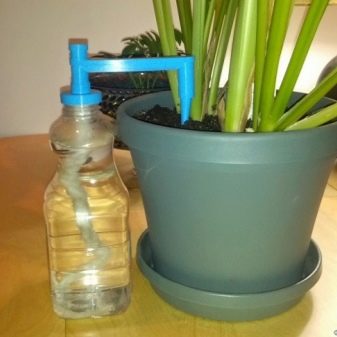

Fertilizers
This culture does not have a dormant period. Since active development takes place all year round, the plant needs additional nutrition all the time. Top dressing does not allow the shoots to thin and stretch. In winter, the flower is fertilized once a month. At other times - twice a month. Complex liquid formulations created specifically for ornamental deciduous plants are suitable.
With regard to concentration, it is recommended to follow the instructions here.

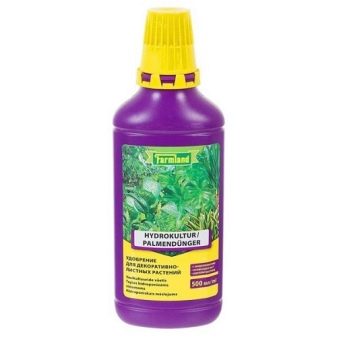
Pruning
Pruning is another must-have.If you ignore this procedure, the plant will no longer be compact and attractive. The optimal time is the beginning of spring.
An excellent solution would be to combine the pinching of shoots with a plant transplant.
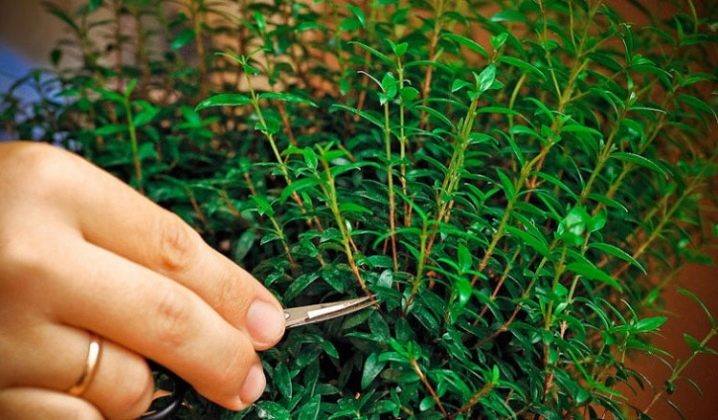
Reproduction
Seeds
In this way, only certain types of pylaea are propagated. Sowing should begin in the spring.
- To begin with, you should choose a suitable container. It should be shallow but wide.
- The selected container is filled with a sand-peat composition. You can get a general purpose primer from a specialized store.
- Seed material is spread on the surface. Then it is sprinkled with a small amount of the substrate. After that, spraying is carried out from a sprayer.
- Greenhouse conditions are organized. For this, the planting material is covered with glass or a transparent bag. The light should be diffused. The optimum temperature is around 20 C.
- Every day, the shelter is raised briefly. This is necessary to provide fresh air for plantings. As the soil dries out, spraying is performed.
- Germination seed material takes about 1 month.
- As the seedlings develop they need to gradually begin to familiarize themselves with the new conditions (without a greenhouse). Watering should be moderate.
- When 2-4 leaves appear, young plants are transferred to individual containers.

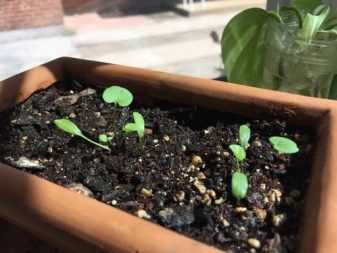
Cuttings
This is the most common method. Cuttings are taken from the top of the plant. The optimal length is 10 cm. An important point is the presence of 2-3 internodes. The procedure can be carried out at any time of the year. The resulting cuttings are placed in water. It is also permissible to bury them in wet sand. A sandy-peat composition is also suitable.
You won't have to wait long for the roots to appear. In water it will be noticeable immediately. If the planting material is placed in the soil, it should be replanted as growth intensifies. It is worth keeping young plants in a light shade and cool for a couple of weeks. They can then be placed under normal conditions suitable for an adult culture.

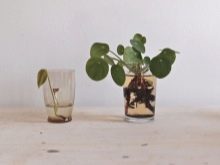
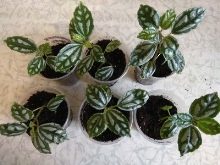
Diseases and pests
Often the fault of the ailments affecting the pilea is improper care.
- Due to excess moisture, the culture is affected by powdery mildew. It appears as gray spots on the green part of the plant. The soil starts to smell like rot. In such a situation, you need to remove the affected areas, and then treat the bush with a fungicide.
- If the shoots become lethargic, and the foliage falls off, it can also be concluded that the soil is excessively wet.
- In cold or extreme drought conditions (complete drying of the earthen coma) leaves can wrinkle and fall off. To solve the problem, you should provide a temperature of about 21-25 C, as well as normalize watering.
- If yellowish or brown spots are visible on the leaves, this is a sign of improper lighting organization (direct sunlight falls on the plant). It may also indicate inaccurate watering (water gets on the leaves). The cause should be found and eliminated. The damaged parts must be removed.
- If the foliage turns pale or loses its variegation (with a multi-colored color), which means that the plant should be slightly shaded. This happens due to too bright lighting.
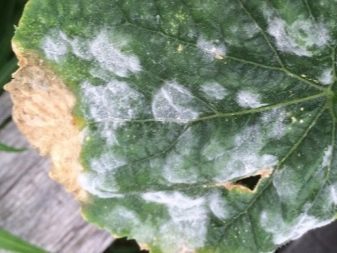
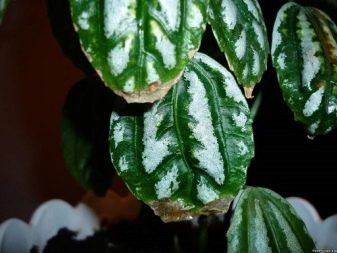
Under favorable conditions, the culture is rarely affected by pests. Otherwise, 3 serious threats can be observed.
- Spider mite. These small pests are difficult to spot. However, black dots remain on the leaves from their bites. In addition, the insect weaves a thin cobweb on the plant, which is striking.
- Shields... These brown insects create noticeable bulges in the foliage.
- Thrips... These pests spoil the leaves of the crop.
Any pests should be disposed of according to one scheme. The affected leaves are removed. Then they take a cotton pad, moisten it in alcohol or soap solution. After that, the plant is completely wiped. Then the culture is treated with a fungicide.
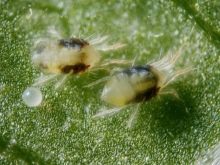
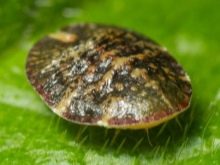
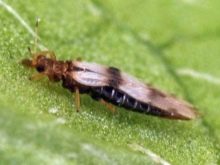
You can find out how to transplant Pilea by watching the video below.
























The comment was sent successfully.